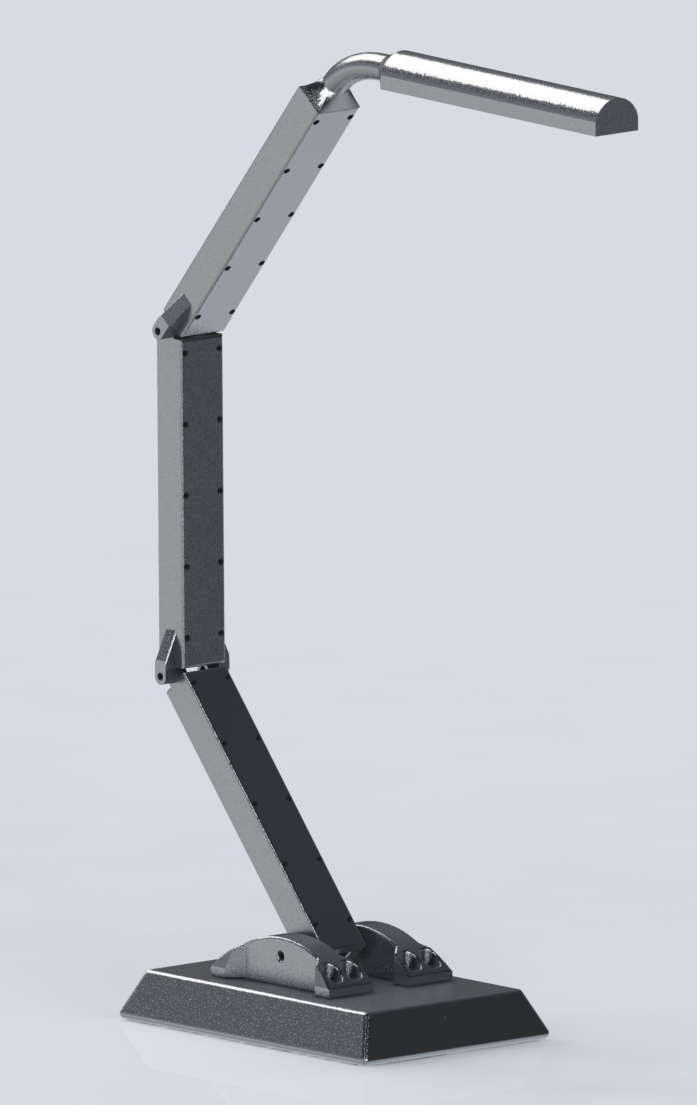During the construction of this project I have found constraints as well as specifications that are hard to overcome and keep. I did not realize a lot of these constraints in the design of the CAD but only once I started building.
The top 5 constraints are as follows:
- Tolerances: The tolerances of all my pieces are very important as they are what allow the pieces of the lamp to stop moving once in the desired position. The joints have been the most difficult in toleranceing as I put in a tolerance in CAD but my 3D printer has its own tolerances that make this more difficult. I have found the best way to overcome this is to print the part a little oversized and then sand down the joints as needed.
- Weight: Because the majority of this lamp will be 3D printed it is very light with a large arm to allow the lamp to move as desired. The center of mass changes a lot depending on where the position is at. I found the best way to overcome this is to put a couple of weights in the bottom part of the lamp to keep this from happening.
- Wiring: The wiring has to be able to move freely throughout the inside of the lamp and I did not think this was going to be an issue as I put channels to house the wiring throughout the entire lamp. I found that getting the right amount of slack in the joints has been difficult because if there is not enough the wiring will catch and prevent the lamp from moving freely.
- Lighting: As this is a lamp the lighting is very important but in testing different housing for the LEDs I have not be able to get the type of light dispersion that I want.
- Time: This has been taking a lot more time as I have been testing than I planned for. Each time I test print a bar on the lamp it can take up to 11 hours and use a decent amount of filament.
The top 5 specification are as follows:
- Aesthetic: The aesthetic that I want is a modern/futuristic lamp and this is pretty difficult to achieve with 3D printing materials. I have tried a variety of specialty filaments such as metal and marble looking filaments to see what gives the best look that I am going for.
- Lighting: This lamp has to function as a good lighting source and the LEDs that I have are not quite putting out the amount of light that I am wanting.
- Functionality: As I want this to be a functional lamp that can articulate into many different positions I have to get all of the joints to work perfectly if I want this to work the way I envisioned it to.
- Battery Powered: This lamp needs to have a battery as I want the futuristic aesthetic of not being able to see any wires and work without a power cord.
- Programmable Circuit Board: This specification is so that I can control the colors of the LEDs as well as how bright they are. If I do not have a circuit board I will not be able to control any of these features that come with using LEDs.


2 Comments. Leave new
Great job on the constraints and specs. Good on yah for figuring out a good way to tolerance your parts with 3D printing, i know getting things to fit properly is no easy task. Are you using individual LEDs, or LED strip lighting. It may seem a little less in depth, but LED strip lights usually come with a pre-programed remotes that may allow you to get rid of the PCB requirement.
Hey Ryan,
I like the constraints and specifications you’ve outlined so far in your project. It seems like your pretty far along with the design and fabrication, and so identifying where you are running into problems is good to do early. To control the brightness and color, have you considered using knobs set in your base? that or some sort of linear potentiometer could look really cool and would fit the aesthetic well. Also, with the finish, sanding and metallic spray paint on 3D printed parts does look pretty good if done well. It might be more work, but you could get nice results.